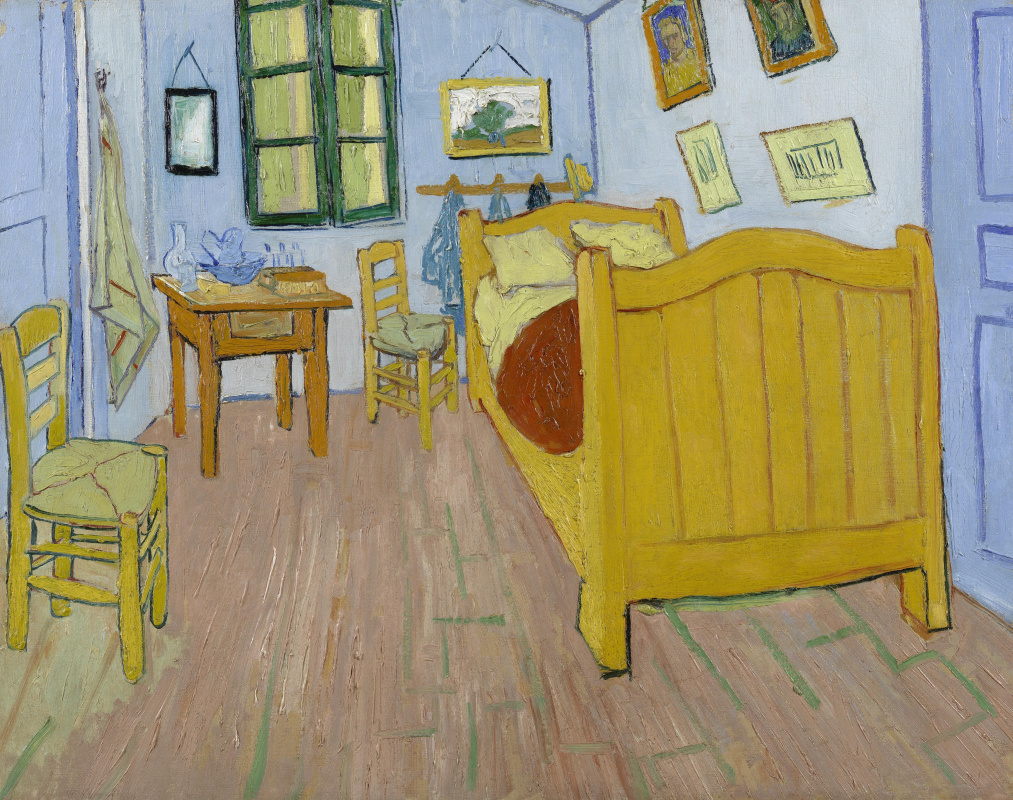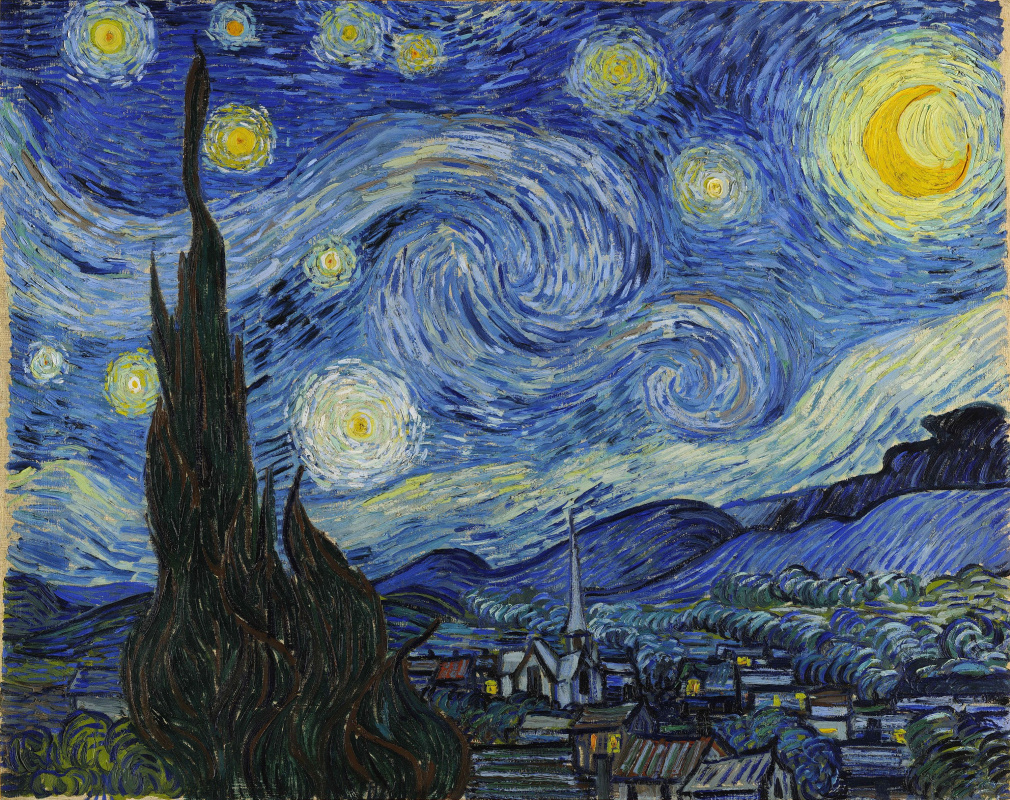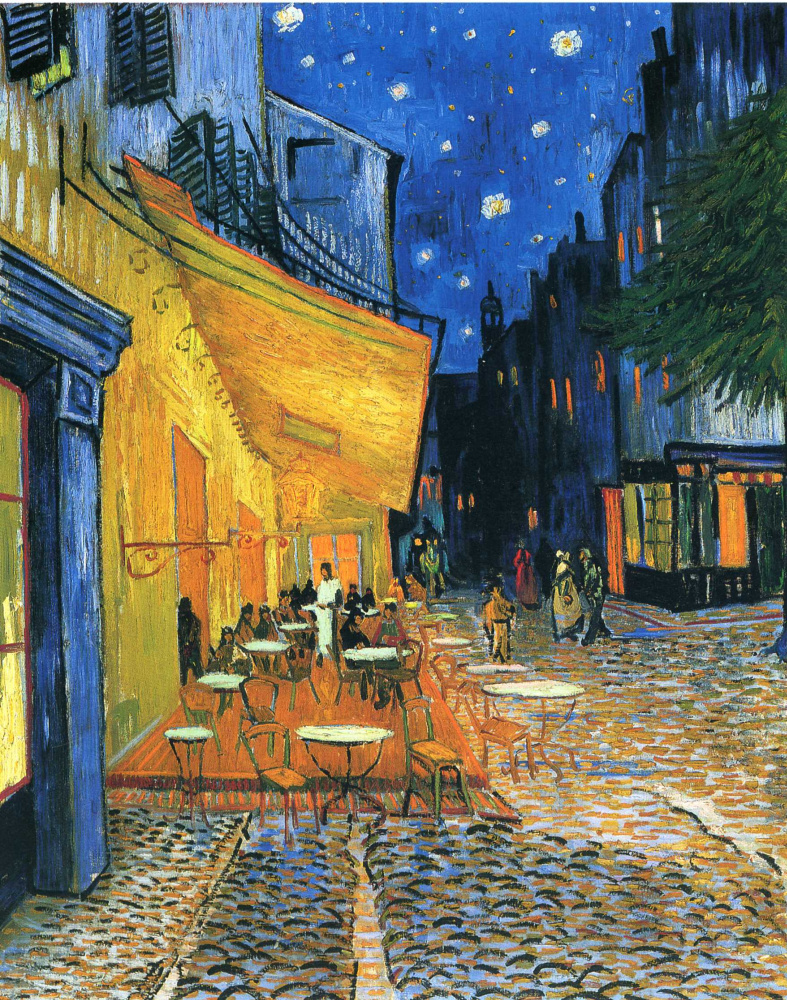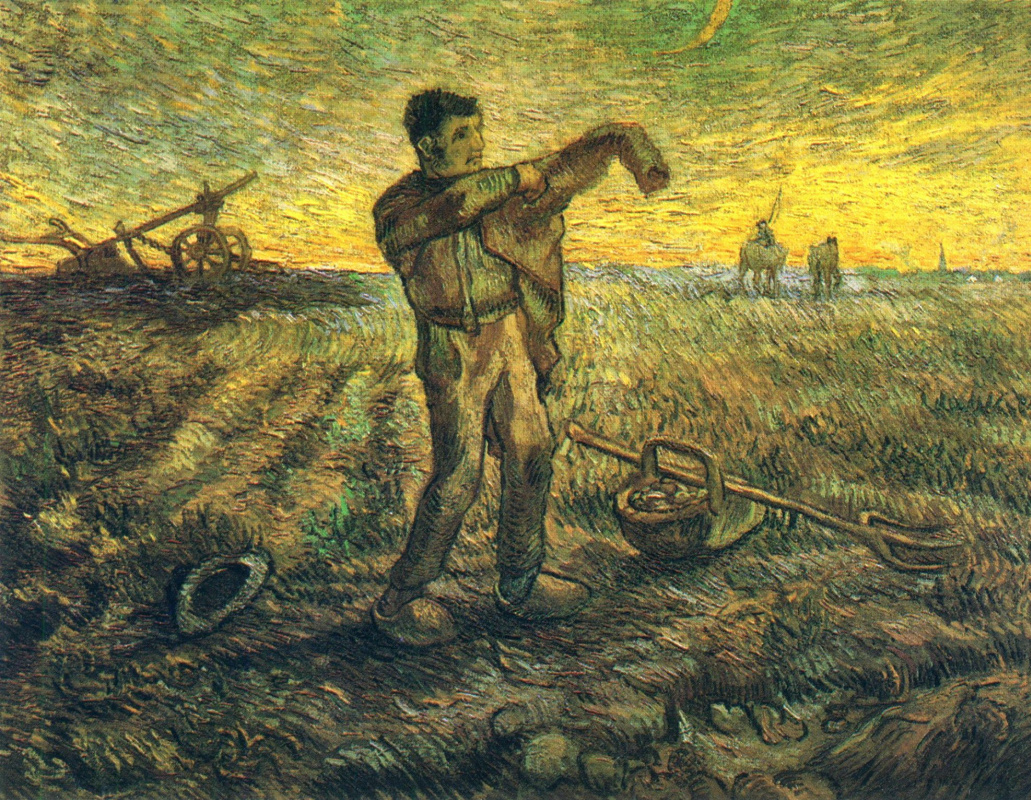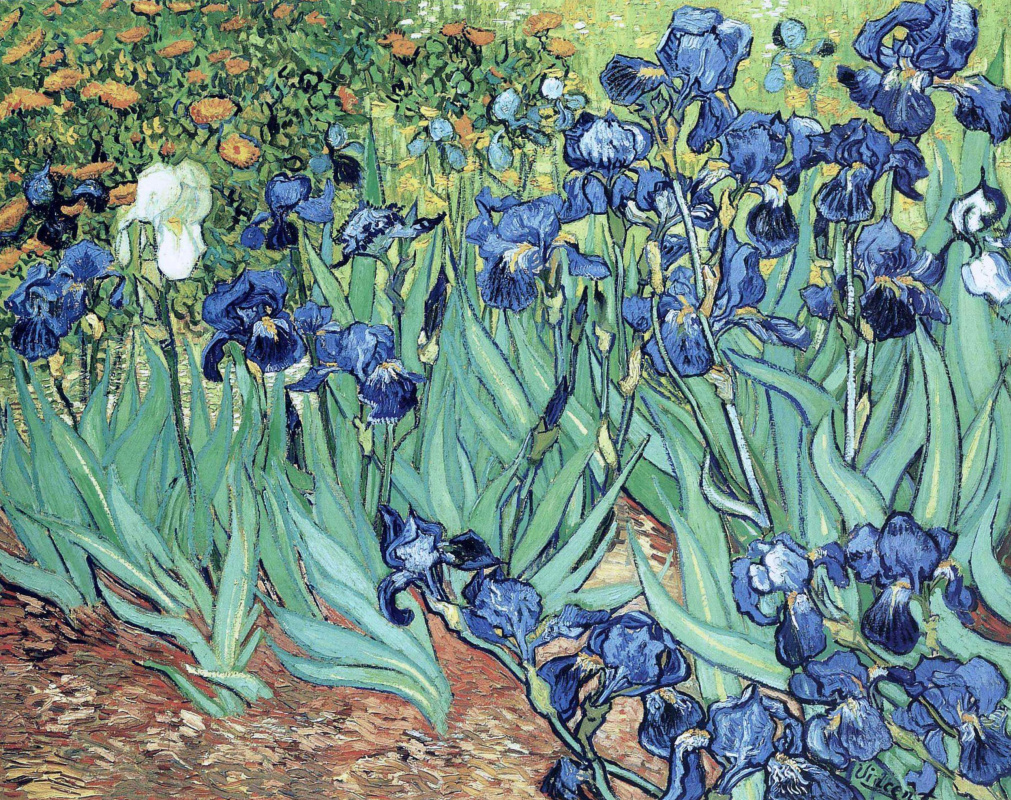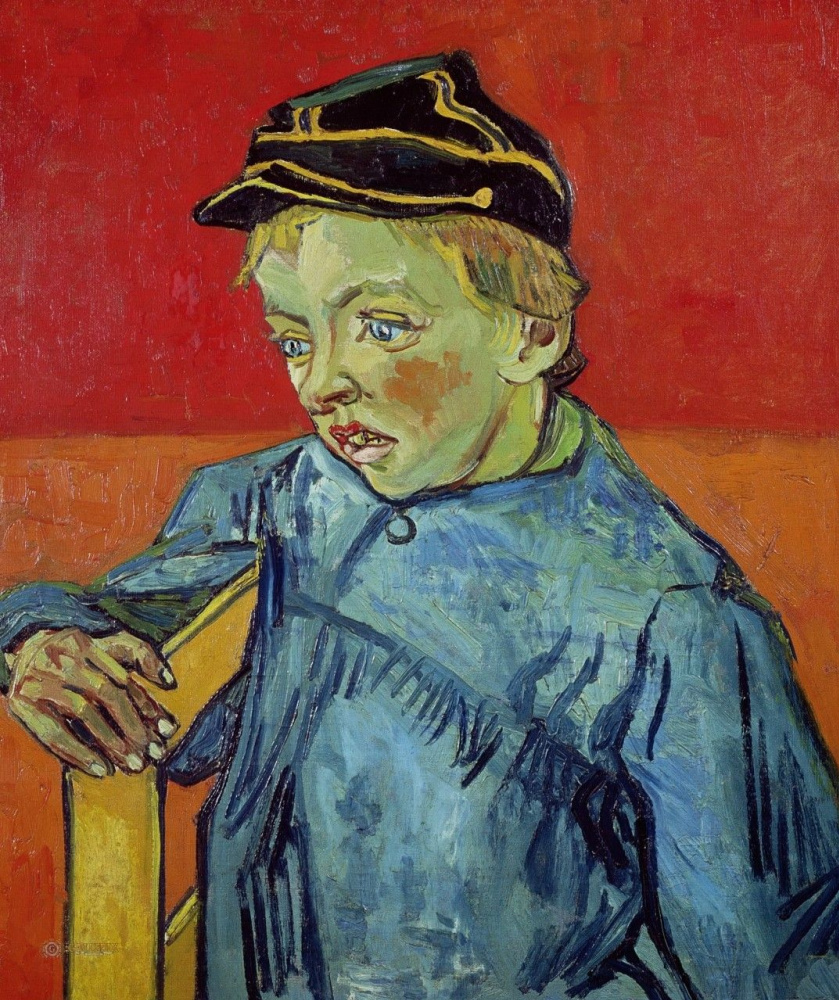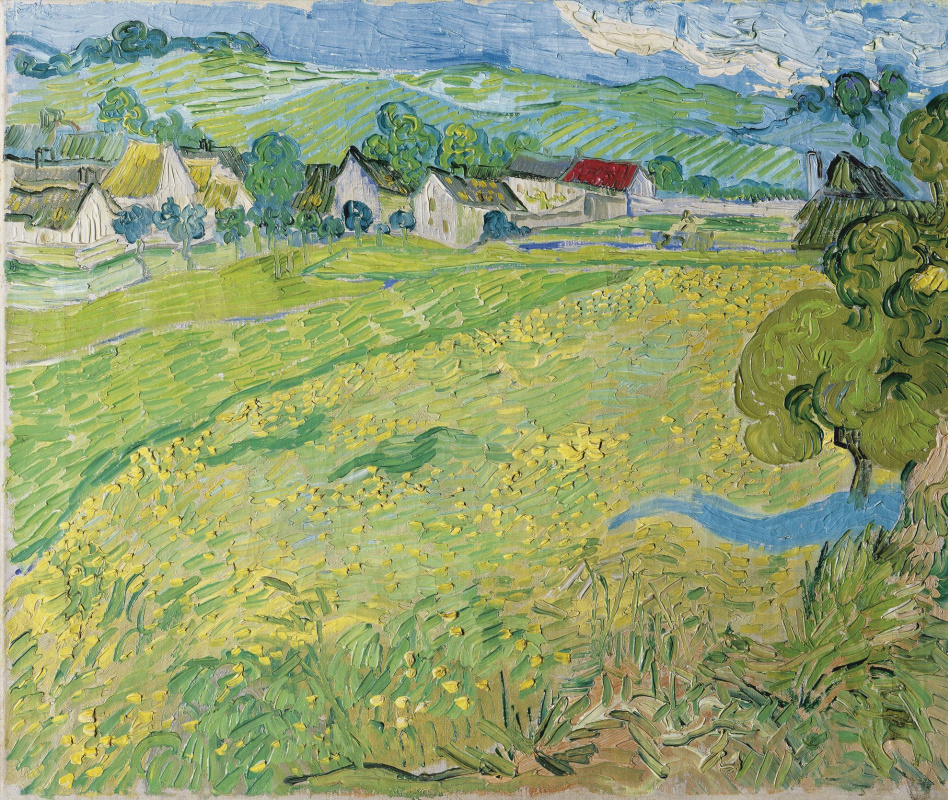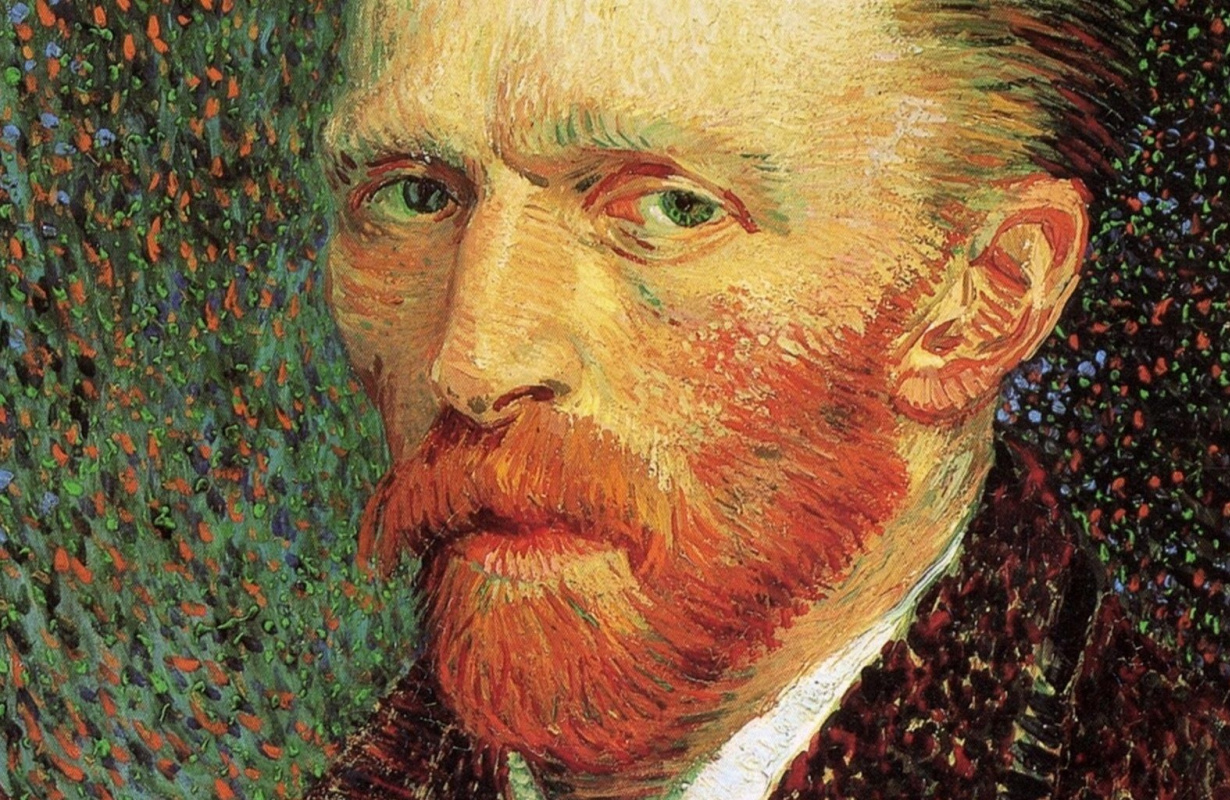
Vincent works are not only in the homeland of absinthe - they are scattered throughout the world. Chasing master's masterpieces, you can create an alternative travel map.
On this map will be the Old and New Worlds, the starry sky and gloomy views, the Seine and the Neva, cafes and hotels, airplanes and bicycles, central skyscrapers and private museums in nature - in general, you won't be bored.
On this map will be the Old and New Worlds, the starry sky and gloomy views, the Seine and the Neva, cafes and hotels, airplanes and bicycles, central skyscrapers and private museums in nature - in general, you won't be bored.
Спальня в Арле (первый вариант)
Жовтень 1888, 72.4×91.3 см
Vincent van Gogh Museum
Where?Amsterdam
Let's sing?Here is the largest collection of works Van Gogh. The composition is built as a dumb biography of the artist: from it you can understand how the master's handwriting developed, how he changed cities in search of himself and his style. It contains more than 200 paintings by the artist and about 500 drawings. Unfortunately, in December 2002, the museum was impoverished in two canvases (these are the early works of the artist "Sea view at Scheveningen"and "The congregation is leaving the reformist church in Nünen"): someone stole them at night, and so far nothing is known about the works.
Here you will see domestic scenes ("Potato Eaters"), self-portraits, works created in moments of joyous flashes (“Bedroom in Arles”), still lifes (one of the versions "Sunflowers") - a journey through the imagination of Van Gogh promises to be long and exciting.
Next door:the works of Van Gogh's colleagues, who at various times were his friends and enemies, are also exhibited here. Speech about canvases Paul Gauguin(1,2), Claude Monet, posters and sketchesHenri Toulouse-Lautrecand other post-impressionist works. Bonuses: The museum organizes thematic exhibitions devoted to the art of the XIX century, which help to understand how art progress developed and what changes took place in society. The museum is located on Museumplein Square, a beautiful lawn overlooking the city is nearby, and the Ferris Wheel is within reach. And here you can come to a tone for the weekend, moving along the canals solely on a bicycle.
Воспоминание о саде в Эттене
Листопад 1888, 73.5×92.5 см
Hermitage
Where: St. Petersburg, Neva Embankment
Why?In Russia, 14 works by Van Gogh - 5 in the Pushkin Museum to them. Pushkinand 9 - in the Hermitage. The works were here thanks to patron Sergey Schukin. After the revolution, his collection was transferred to the State Museum of New Western Art, and from there the works were partially in the Hermitage, partly in Pushkin. Next door: for more than 250 years, the Hermitage collection has grown from 317 to 3 million pieces. These are figurines, furniture, interior items and paintings. However, running through the entire history of art in a day will not work: no one knows how to run so fast. Inquisitive minds considered: the halls of the Hermitage are 24 kilometers, and to see all the exhibits, it will take at least 11 years (this is if one lasts no more than a minute for everyone).
Bonuses:take a walk along the Neva and meet with especially important cats. Back in the time of Elizabeth, the Hermitage began to attack the rats. I had to get cats to cope with rodents. Catherine II didn’t love cats, but she appreciated her professionalism, so nobody kicked them out of the Hermitage. Each has a name and a document; cats are allowed to walk everywhere except in showrooms. By the way, until the mid-19th century, only important gentlemen were allowed to enter the Hermitage, and then in ceremonial attire - and now this pleasure is available to everyone. It is worth appreciating this opportunity.
Звездная ночь
Червень 1889, 73.1×92.1 см
New York Museum of Modern Art (MoMa)
Where: New York, Manhattan
Why? The magical "Starry Night" has been preserved in the Museum since 1941. The work is written from the window of the sanatorium in Arles. In letters to his brother Theo, Van Gogh explained: “I still need religion. Therefore, I went out of the house at night and began to draw stars. ”. It's funny that the master considered the canvas unsuccessful, but now it is one of his most popular works. Next door:"Avignon girls"Picasso "The Persistence of Memory"Dali first version of "Dance"Matisse (the secondlocated in the Hermitage) "World of Christina"Andrew Wyatt.
Bonuses:see all the treasures that MoMa almost lost. In 1947, a contract was signed between the MoMa and Metropolitan museums, according to which the works, as they moved from the category of modern to the category of classics, were supposed to "move" from the museum of modern art to the Metropolitan. The contract was terminated after six years - very on time! Otherwise, the MoMA would remain with half-naked walls.
Ночная терраса кафе в Арле
Вересень 1888, 80.7×65 см
Kröller-Müller Museum
Where: Netherlands, Otterlo, National Park De Hoge Veluwe
Why?This is the second largest collection of paintings by Van Gogh (87 exhibits, including "Night Cafe in Arles") - more only in the Van Gogh Museum in Amsterdam.
Next door: In addition to the paintings of Van Gogh, the museum presents the work Pete Mondrian, , Lucas Cranach the Elderand many others. The founder of the museum, collector Elena Kröller-Muller was a great connoisseur of Van Gogh and, of course, a woman with a delicate taste. This is evident both in the collection and in how the space around it is decorated.
Bonuses: The museum is located in the National Park - it says a lot. On a well-kept area of 300,000 m², masterpieces of painting and sculpture are collected - from Rodinbefore Henry Moore. Elena Kröller-Muller advocated a union of art, architecture and nature.
Урожай в Провансе
Червень 1888, 51×60 см
Israel Museum
Where:Jerusalem, Givat Ram district
Why? View the work of Van Gogh in one of the largest museums in the world - why not? Here are two graphs and three master paintings created between 1885 and 1889 (one of them is in the photo above).
Next door:The museum has more than 500,000 exhibits from different eras. One of the most ancient finds is a carved female figure, which is called one of the most ancient works of art in the world, and a centuries-old nail, confirming that crucifix was practiced at the time of Christ. Bonuses: unusual architecture and scale: the area of the museum complex is 81,000 square meters. Nearby is the Museum of Bible Countries, the Hebrew University and the Supreme Court of Israel.
Звездная ночь над Роной
Вересень 1888, 92×72.5 см
Musee d'Orsay
Where: Paris, left bank of the Seine
Why? Here are shown the works of the late period of creativity of Van Gogh, including portrait of Dr. Gachetand "Starry Night over the Rhone." In the night picture - view a couple of minutes walk from "Yellow House"which the artist rented for some time (the picture of the house is kept in the Van Gogh Museum in Amsterdam).
Next door: Edgar Degas(1, 2, 3), Jean-Francois Millet(1, 2, 3),Camille Pissarro(1, 2, 3) and a lot others- the collection is extensive. And the d'Orsay museum is located across the river from the Louvre
Bonuses: You will see one of the most beautiful railway stations in the world - the Museum d'Orsay is located exactly in it. The station worked from 1900 to 1939, then for several years it was practically idle. In 1971, they wanted to demolish the building, but thanks to President Georges Pompidou, the decision was changed to a constructive one: to transform the station into a museum. Performances, concerts and conferences devoted to temporary exhibitions are often held in d'Orsay. In general, look, listen, delve - the slogan of this place.
“Night Cafe Terrace” (Kröller-Muller Museum), “Night over the Rhone” (d'Orsay) and “Starry Night” (MoMa) are, one might say, three “star” sisters (the last youngest).
Вечером: конец дня (по мотивам Милле)
1889, 72×94 см
Menard Museum of Art
Where:Komaki City, Central Japan, Aichi Prefecture
Why?See the canvas "In the evening: the end of the day", written "in the footsteps of creativity"Jean-Francois Millet. The museum brings together under one roof a large collection of Japanese art and the work of the Impressionists - there is something to see.
Next door: works of Japanese masters of the XIX-XX centuries - traditional (Nihonga) and "under the west" (Yōga). Adherents of the Ninong style kept the Japanese picturesque traditions, the supporters of yoga (not to be confused with the practice of Hindus) were fond of European trends. It is interesting to compare how the artists of one country practiced art in the same period in different ways.
Bonuses: traveling around Japan is beautiful in itself. For connoisseurs of Van Gogh: in the country there are many works of the artist, however, less than before - one version of "Sunflowers" burned down in a fire. By the way, remember "Portrait of Papa Tangi"? This work is reminiscent of the times when travelers brought Japanese art to Europe, and not only the collectors liked it, but also influenced the style of European masters.
Ирисы
Травень 1889, 71×93 см
Getty Museum
Where: Los angeles california
Why? Take a look at those “Irises” and visit the largest museum in California. Oil tycoonPaul gettyHe left most of his fortune to augment the collection of the museum named after himself - this allowed the center to buy up the works of old masters at a record speed. Next door:WorksRubens, Rogier van der Weydena lot of delightful bush. This is a museum with a large range - from old masters to impressionists, and even more. The masterpieces of antiquity are exhibited in a separate room - at the Getty Villa in Malibu.
Bonuses:The museum hosts lectures and educational activities with class names. For example, "Stone pixels: mosaic of yesterday and today." Entrance to the museum is free. The center is built on top of a hill, three cablecars leave it to him. There is a view of Los Angeles from there - when else will you look at the city from a height?
Школьник
Грудень 1888, 63×54 см
Art Museum of Sao Paulo
Where: Brazil, Sao Paulo
Why?There are not so many wild monkeys in the country, as we think, but there are a lot of beaches, delicious food and the Museum, which stores four works by Van Gogh, written in San Remi from November 1889 to May 1990. Including - a portrait of a schoolboy in the photo above.
Next door: Diego Velazquez (1), Francisco Goya(1), Amedeo Modigliani(1,2) and other excellent masters - there are more than 8000 works in the museum.
Bonuses:Beautiful architecture, nightlife and Ibirapuera Park are the perfect place for walking. From the Sao Paulo railway station you can quickly get to the ocean.
В Овере
1890, 55×65 см
Thyssen-Bornemisza Museum
Where: Madrid, Palace of the Dukes of Villahermosa
Why?see 5 works by Van Gogh, created from 1885 to 1890.
Next door: Agnolo Bronzino(1),Diego Velazquez, (1), Paul Gauguin(1, 2, 3) and other masters, including Italian primitives, who are not represented in the Prado.
Bonuses:The Thyssen-Bornemisza Museum is part of the Madrid Golden Triangle of Arts, along with the Prado and the Queen Sofia Art Center. All important is near.
Find 10 differences: two works by Van Gogh of one period. The first is in Madrid, the second - in Annapolis.
Hague City Museum
Where:Hague
Why? See early still lifein which sympathy for the old Dutch is guessed, self-portraitand "Poppy Field". Similar poppy fieldThere is in the City Museum of Bremen.
Next door:four jobs Pete Mondrianincluding the famous"The Red tree"work Egona Schiele(1, 2) and "Diana with the nymphs" Jan Vermeer.
Bonuses: visit the North Sea, and see where the representatives of the Dutch government and parliament work. There are two beaches in The Hague that are popular throughout the country - Kaikdane in the west and Scheveningen in the north. Back in The Hague, be sure to go to Mauritshuis. This is a collection of paintings by Dutch masters of the Golden Age, in which Vermeer and Rembrandt are waiting for you. The Escher Museum in the former royal palace of Lange Warhout is an ideal place for lovers of optical illusions. But it is better to visit it on another day, apart from the Van Gogh route: you should not put oysters and chocolate in one plate.
Title photo: Vincent Van Gogh, Self-portrait of 1887 (fragment).
Author: Lena Skachkova


